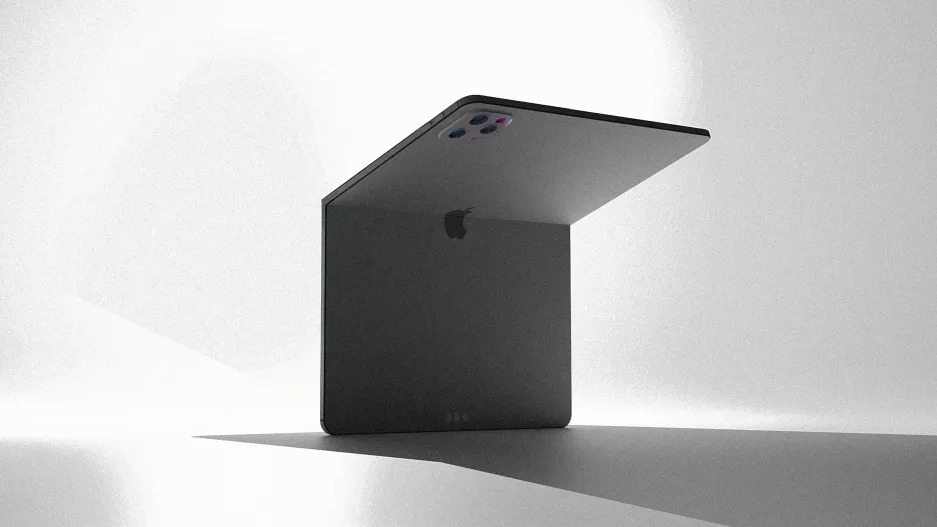- | 9:00 am
A foldable iPad would be Apple’s worst idea
The rumor mill is churning with a new prediction for a foldable iPad from Apple. Can we all agree that it’s a terrible idea?

Word on the street is that Apple is going to “for sure” release a foldable iPad in 2024. Ming-Chi Kuo, a well-known and respected tech industry analyst made the claim, and given his track record of accurately predicting Apple’s next move, people seem to be buying it.
Let’s assume that his prediction is 100% accurate, so we can confidently establish that, of all the dumb ideas ever registered in the Ancient Infinite Scrolls of Really Dumb Ideas, a foldable iPad ranks a notch over Zuckerberg’s metaverse and half an inch under skiis for elephants. Entertaining this prediction for a minute leads us to the question: Why would anyone want a foldable iPad in the first place?
I can’t imagine a line of people walking up to Apple Park demanding their folding tablets like the villagers rioting to burn Frankenstein. In fact, I’m not seeing anyone lining up to buy a folding anything, except rolling papers to make all the joints needed to think a foldable iPad is a good idea. Let’s start with the facts: The most recent sales of the world’s most popular folding devices—the Samsung Galaxy Z Fold and the Samsung Galaxy Z Flip—are simply not good despite a promising start.
Compared to the rest of the smartphone market, foldable phones account for a tiny sliver of phones sold. According to IDC, the forecast for global foldable phone sales in 2022 was 13.6 million out of 1.24 billion smartphones sold in the same period. The analyst firm projects 41.5 million units will be sold in 2026, or about 2.2% of global shipments of 1.459 billion units.
This is not a surprise. Foldable devices like Samsung’s and the Motorola Razr have been in the market since 2019, but most people don’t really seem to care. The theoretical advantage of foldables is that you end up with a more compact phone when folded (like the Flip and the Razr) or a bigger phablet when unfolded (like the Fold). But this all result in bulkier designs and many technical problems.
These are problems that early adopters discovered while attempting to embrace their new status symbol, caused by the very nature of their design: no matter how hard you try, making an electronic screen that folds and unfolds several times a day is intrinsically a bad idea with current technology. Five years into the market, screens continue to crack or develop creases over time, despite some durability tests and company claims. And their hinges, which are still creaking, can’t really handle dust. Those technical limitations are unlikely to change in the next year.
My gut feeling, however, is that the regular people don’t even care about those problems because, after seeing a foldable gadget, they realize that the fancy folding feature is just a big yawn in the ocean of yawning that phones and tablets have become. These devices exemplify the needless iteration of consumer commodities; they are proof that gadgets have reached their design innovation plateau.
And yet, for some reason I can’t quite grasp, foldable devices have become the beloved unicorns of some of the tech blogs, who love the idea of them as much as they begrudgingly hate the actual implementation of them. I suspect it may be the influence of science fiction series like Westworld and the desire for something—anything—that can make gadgets exciting again. I want that too, but I just can’t understand the infatuation.
But consider again the idea of the foldable iPad in 2024. There’s no way that this device will not suck Apple Pencils. First, the Cupertino company is unlikely to magically fix the inherent problems of this form factor because it uses exactly the same suppliers as every Asian manufacturer out there. No amount of Cupertino pixie dust is going to make a foldable iPad any thinner than a double iPad Mini Whopper with extra cheese. And, finally, a foldable design will destroy the idea of hybrid computing that Apple established with its foldable Magic Keyboard plus iPad combo. Just think about it for one second: a double foldable design. It just sounds unwieldy.
Apple can, of course, ignore all these pitfalls to try to sell a device nobody really asked for. After all, they had the gall to spin the pill hole in the iPhone 14 Pro into a feature. If anyone can turn display creases into hallmarks like Jesus turned water into wine, it’s Apple. It’s not the first time that the company has added needless features to its products to entice demand and satisfy Wall Street’s shameless gluttony for never-ending growth.
Then again, maybe all these analysts making predictions are just wishing for Apple to rescue the foldable concept from its irrelevancy. They just forgot that we already have a foldable iPad. It’s called the MacBook.





































